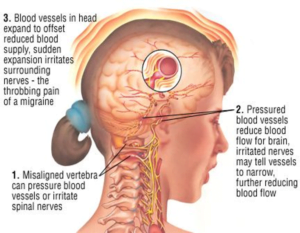Many doctors prescribe medication to either prevent migraines or treat the pain. However, the side effects of these medications can be unpleasant, including nausea, fatigue, and racing heartbeat. In fact, as many as two-thirds of patients do not take migraine medications as prescribed.
What are migraines?
Migraines are a recurring type of headache. They cause moderate-to-severe pain that is throbbing or pulsing. The pain is often on one side of your head. You may also have other symptoms, such as nausea and weakness. You may be sensitive to light and sound.
Researchers believe that migraine has a genetic cause. There are also several factors that can trigger a migraine. These factors vary from person to person, and they include:
- Stress
- Anxiety
- Hormonal changes in women
- Bright or flashing lights
- Loud noises
- Strong smells
- Medicines
- Too much or not enough sleep
- Sudden changes in weather or environment
- Overexertion (too much physical activity)
- Tobacco
- Caffeine or caffeine withdrawal
- Skipped meals
- Medication overuse (taking medicine for migraines too often)
What Can a Doctor of Chiropractic Do?
Chiropractic treatment for migraines works in multiple ways:
- Restores proper nervous system communication by ensuring alignment.
- Decreases irritation in the nerves that send pain signals to the brain.
- Reduces muscle tension, a common trigger for migraine headaches.
Your doctor of chiropractic may do one or more of the following if you suffer from a primary headache:
- Perform spinal manipulation or chiropractic adjustments to improve spinal function and alleviate the stress on your system.
- Provide nutritional advice, recommending a change in diet and perhaps the addition of B-complex vitamins.
- Offer advice on posture, ergonomics (work postures), exercises and relaxation techniques.
Chiropractic doctors undergo extensive training to help their patients in many ways beyond just treatment for low-back pain.

They know how tension in the spine relates to problems in other parts of the body, and they can take steps to relieve those problems.
Some people may be skeptical if they do not see results right away or if the results do not live up to their expectations. Ideally, this type of migraine treatment is done as part of a larger overall, multimodal approach to managing migraines and their symptoms to provide overall wellbeing.
Besides Chiropractic care, Acupuncture can also treat migraines.

Acupuncture Benefits for Migraine Sufferers
- There have been many studies that have shown a significant reduction in migraine episodes when treated with Acupuncture.
- Acupuncture seeks to restore the flow of positive energy throughout your body.
- It also removes the negative energy that is causing the pain.
- Acupuncture stimulates various systems of your body which has been shown to trigger a healing response.
Acupuncture divides your body into a series of zones and pressure points. Acupuncture needles are inserted into different pressure points, depending on your symptoms. These needle points are usually near nerves in your body. The needle stimulates the nerves to release hormones, such as endorphins, that trigger a response from your body. This immune and circulation system stimulation is what can provide relief for migraines and tension headaches.

